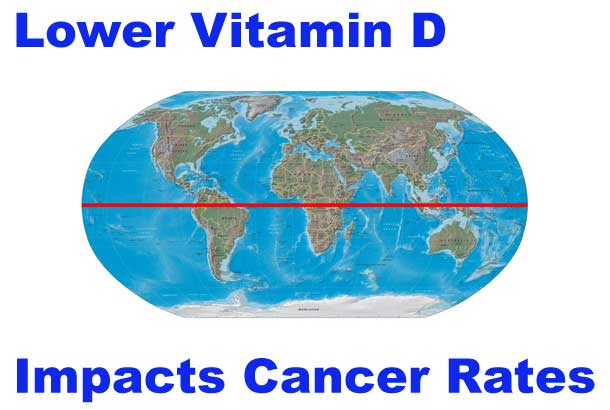
SAN DIEGO – MEDICINE – Epidemiologists at University of California, San Diego School of Medicine report that persons residing at higher latitudes, with lower sunlight/ultraviolet B (UVB) exposure and greater prevalence of vitamin D deficiency, are at least two times at greater risk of developing leukemia than equatorial populations.
The findings are published in the Dec. 4, 2015 online issue of PLOS One.
“These results suggest that much of the burden of leukemia worldwide is due to the epidemic of vitamin D deficiency we are experiencing in winter in populations distant from the equator,” said Cedric Garland, DrPH, adjunct professor in the Department of Family Medicine and Public Health and member of Moores Cancer Center at UC San Diego Health.
“People who live in areas with low solar ultraviolet B exposure tend to have low levels of vitamin D metabolites in their blood,” Garland said. “These low levels place them at high risk of certain cancers, including leukemia.”
Few foods are natural sources of vitamin D, which is more abundantly produced when ultraviolet radiation from sunlight strikes the skin and triggers synthesis.
According to the American Cancer Society, 54,270 cases and 24,450 deaths from leukemia occur in the United States alone each year. There is no known way to prevent most types of leukemia, though some types may be prevented by avoiding high doses of ionizing radiation, exposure to the chemical benzene, smoking and certain types of chemotherapy.
The UC San Diego study analyzed age-adjusted incidence rates of leukemia in 172 countries from GLOBOCAN, an international agency for research on cancer that is part of the World Health Organization, comparing that information with cloud cover data from the International Satellite Cloud Climatology Project. The study follows similar investigations by Garland and colleagues of other cancers, including breast, colon, pancreas, bladder and multiple myeloma. In each study, they found that reduced UVB radiation exposure and lower vitamin D levels were associated with higher risks of cancer.
Leukemia rates were highest in countries relatively closer to the poles, such as Australia, New Zealand, Chile, Ireland, Canada and the United States. They were lowest in countries closer to the equator, such as Bolivia, Samoa, Madagascar and Nigeria.
“These studies do not necessarily provide final evidence,” said Garland, “but they have been helpful in the past in identifying associations that have helped minimize cancer risk.”
Co-authors include first author Raphael Cuomo, Edward Gorham, and Sharif Mohr, all at UC San Diego.






